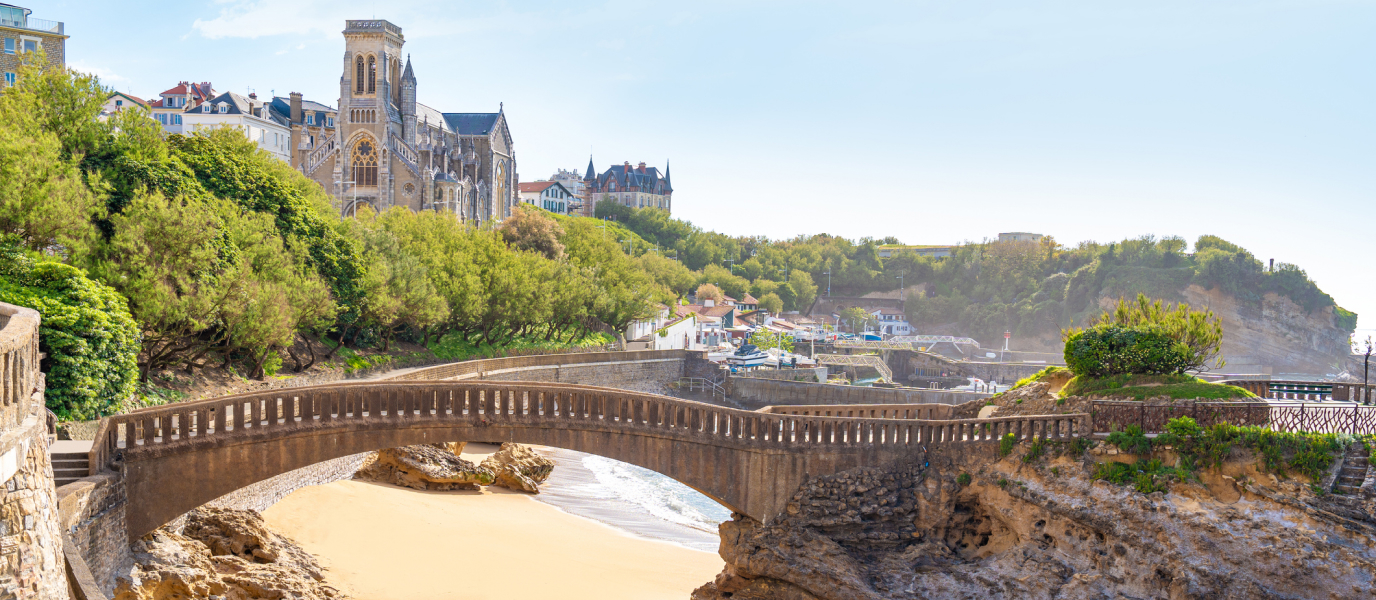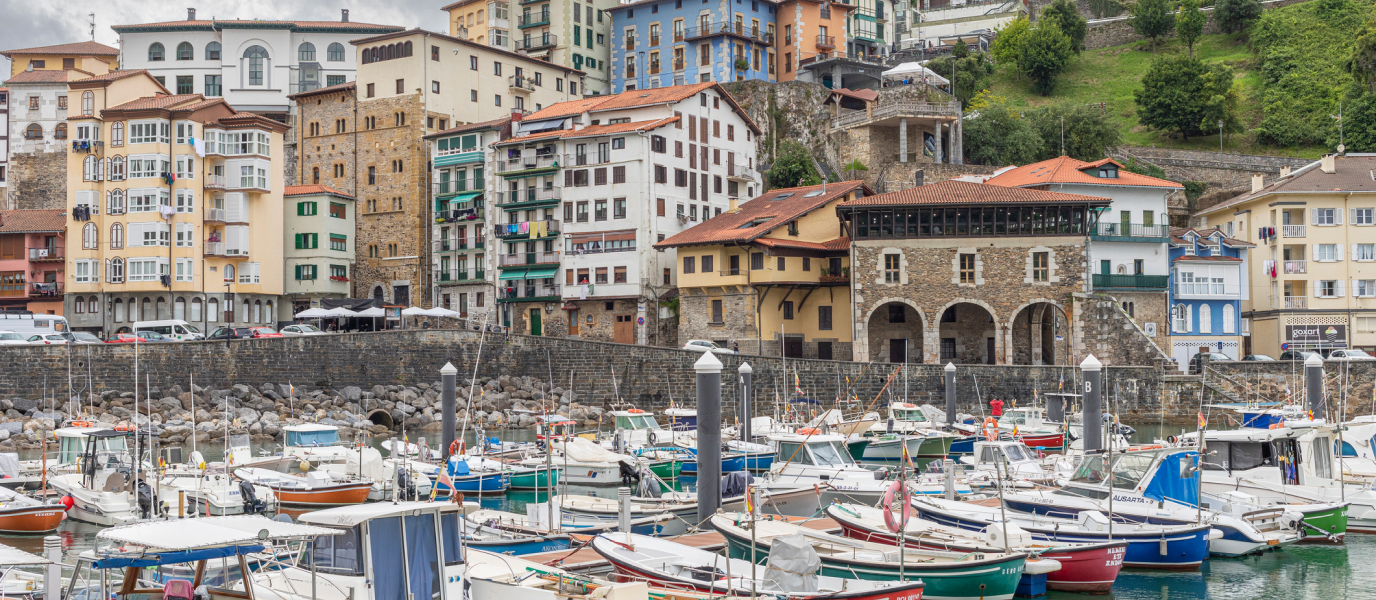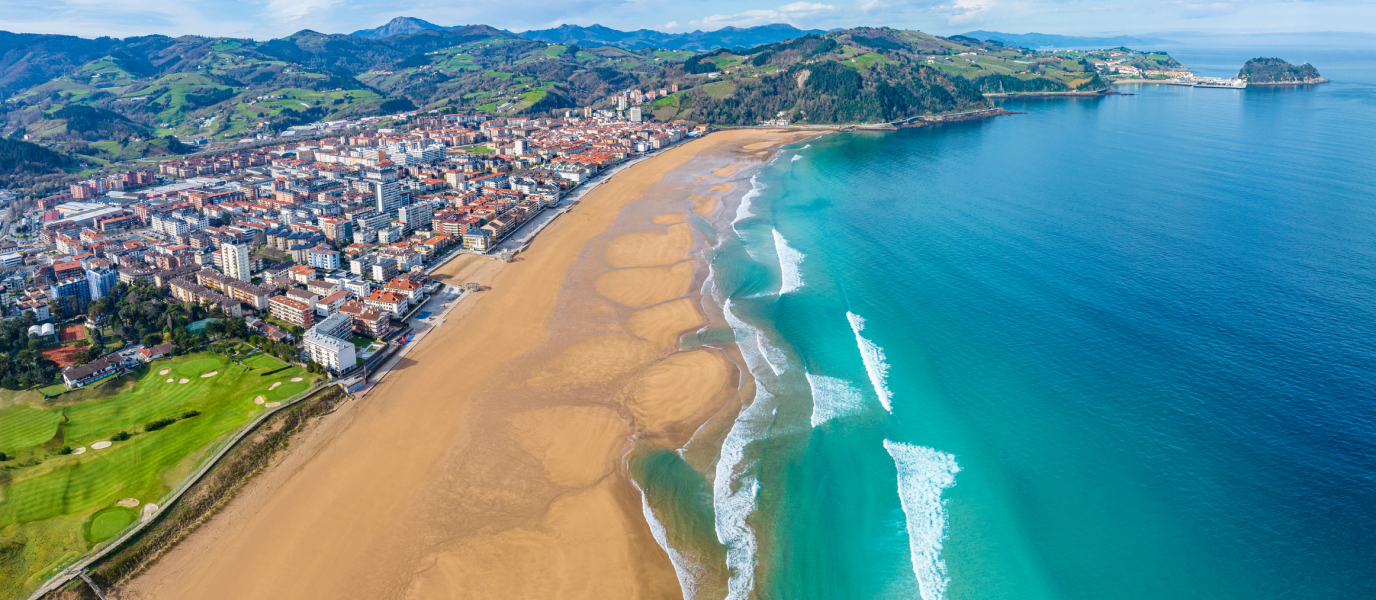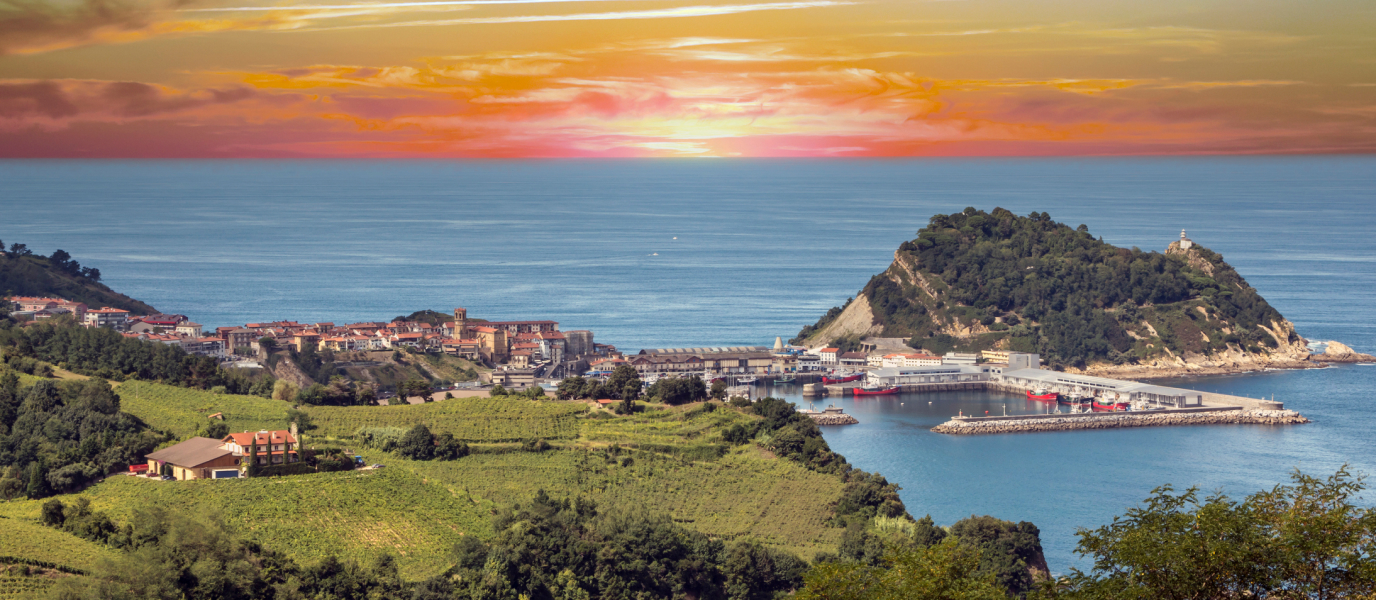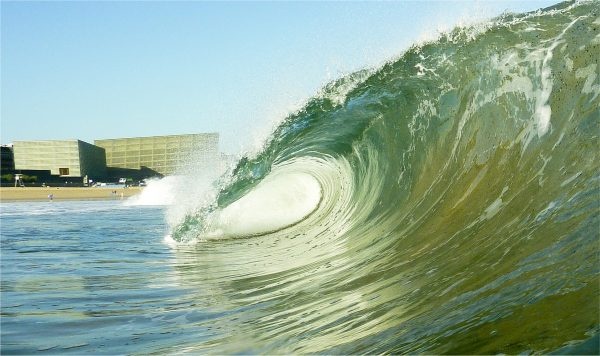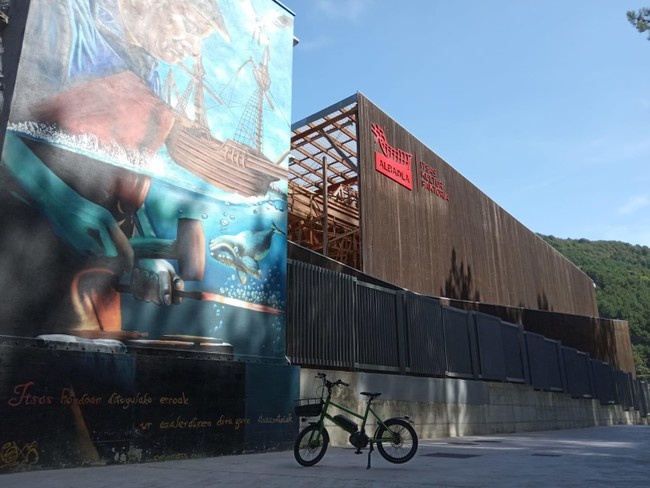Biarritz simply oozes glamour. Resting at the foot of the Pyrenees with the sea lapping at its shores Biarritz, along with its neighbour Saint Jean de Luz, is one of the area’s most coveted holiday destinations. There is no doubt that this small town’s fame began with it being frequented by European royalty in the 19th and 20th centuries but it was the last Empress of France, Eugenie de Montijo, who really put Biarritz on the map. In 1854, Emperor Napoleon III chose Biarritz as the place for his new summer home due to its location near the Spanish border and the beautiful views of the mountains and the sea it afforded. After this, a steady stream of Europe’s monarchs and glitterati elevated Biarritz to its status as one of the most elegant places on the continent. Today, those who seek luxury, relaxation, culture and creativity find it all in the streets once trodden by figures as illustrious as King Alfonso XIII of Spain and Queen Victoria of Britain.
Biarritz, the ‘queen of the French Basque Country’
These were the words of the French playwright Sacha Guiltry when he described Biarritz. Nowadays, Biarritz has garnered the title of ‘Queen of the Greens’ too, since it has no fewer than 16 golf courses in a 100km radius. Not to mention earning its title as the ‘Mecca of Surfing’ since, it is said that its beach – Côte des Basques – was the birthplace of European surfing in 1957.
When it comes to natural beauty, Biarritz continues to surprise and inspire. It offers gorgeous landscapes, from the Saint-Martin Point Lighthouse to the Côte de Basques, and tourists have been wowed for decades by the beach known as the Grande Plage, the fishing port and the famous Rocher de la Vierge (or the ‘Virgin’s Rock’). Together with the Maritime Promenade – dotted as it is with benches to rest and take in the view – as well as decadent mansions, you won’t be lacking things to see and do in this chic surfing town.
Unmissable sights in Biarritz
Hôtel du Palais
Before 1854 Biarritz was little more than a sleepy whaling town but by 1855 it had a become
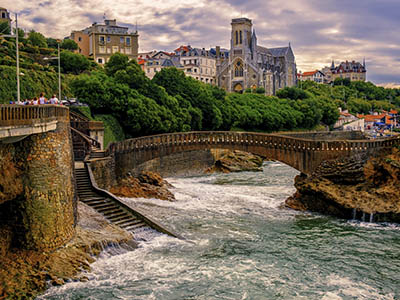
the summer retreat for the Emperor and Empress of France. What was originally called Villa Eugénie is now the resplendent Hôtel du Palais, built to be the summer home of Emperor Napoleon III of France and his wife Eugenie de Montijo. Waves roll over the fine white sands on the doorstep of this decadent masterpiece and the cliffs behind frame it in picturesque splendor, making the Hôtel du Palais the emblem of the city and a magnet for tourists the world over.
Municipal Casino
Biarritz also treasures a symbol of Art Deco architecture in the form of the Municipal Casino. Built in 1929 by Alfred Laulhé, this glorious casino now doubles up as a luxury swimming pool, restaurant and theatre.
The Imperial Chapel (Chapelle Impériale)
Built in 1864 as the personal chapel for Napoleon III and Eugenie de Montijo and dedicated to Our Lady of Guadalupe, you will find this gem just round the corner from the Hôtel du Palais.
The Fishing Port (Port des Pêcheurs)
Although you won’t find much fishing going on in this port today, you certainly won’t want to miss out on the charming restaurants that line the shore. Famous for its fish and seafood, the fishing port is a hotspot for tourists who appreciate excellent food.
The Rock of the Virgin (Rocher de la Vierge)
This seemingly insignificant rock was dedicated to the ‘Guardian of Fishermen’ after it was the scene of a miracle at the end of the 19th century. As the story goes, a group of fishermen found themselves unable to return to port due to a devastating storm that threatened their lives. Then, suddenly, a ray of light appeared, which showed them a clear path through the waves to the port thus saving their lives. In 1865 a statue to the ‘Virgin of the Rock’ was erected and, today, the rock is connected to the mainland by a small bridge constructed by none other than Gustave Eiffel, who was sent there by Napoleon III.
Museum of the Sea Aquarium
This beautiful Art Deco building houses no fewer than 24 aquariums with wildlife from every ocean in the world. Situated next to the Rock of the Virgin, the Museum of the Sea offers much more than your average aquarium. With a seal show and a number of restaurants with ocean views where you can sample the very best of local cuisine, the Museum of the Sea is not to be missed.
Les Halles Market
If you are a fan of fine cuisine and local produce then this is a necessary stop on your walk through Biarritz. Les Halles has been a functioning market since 1885 and still offers visitors the chance to do their regular shopping or grab a bite to eat at one of its many stalls. The market is a veritable temple to local cuisine in which locals show off their prized local produce as if they were the jewels in an emperor’s crown. Here you will find cheese, seasonal fruit and vegetables, oysters, delicatessens, freshly caught fish and traditional Basque pies. What’s more, the environs of Les Halles come to life at night in a flurry of restaurants and bars.
Saint Martin’s Lighthouse
Built in in 1834, the lighthouse (phare) is 74 metres high and those who are brave enough to climb its 248 steps get an unrivalled view of the ocean. Whether you choose to climb or not, however, the views from the lighthouse are stunning, especially at dusk.
Beach Days in Biarritz
The fine golden sand beaches of Biarritz are what really make it a hotspot for tourists. Also, due to the high level of iodine in the water, people have flocked to these beaches for their health benefits for decades. Some of the most famous beaches of Biarritz are:
- La Grande Plage. This is the city’s main beach and it is literally in the centre of Biarritz, occupying the space between the Hôtel du Palais and the Convention centre, which includes the commercial centre and many of the most popular restaurants. Long ago it was known as the Côte des Fous or ‘the Coast of the Crazy People’ because it was frequented by the sick and infirm due to the purported health benefits of the waters there.
- Miramar Beach. Situated between the Hôtel du Palais and the lighthouse, this is normally a quieter beach though it is unadvisable to swim there when the water is choppy due to the strong currents which make it unsuitable for surfing.
- Port Vieux Beach. Small but beautiful, this beach lies right next to the old port and is sheltered from the winds and the currents. During the 19th century, this was home to the whaling ships but today it is known for being the quieter beach at the heart of the city.
- Côtes des Basques. This is a surfer’s paradise. Flanked by cliffs, at high tide the sand fades away as if by magic. For this reason, it is advisable that you take note of the times of the tides or else you’ll be walking back to the centre over the rocks.
- Marbella Beach. Côtes des Basques beach continues on into Marbella beach, which is also a favourite among surfers who appreciate the climb down stairs that is necessary to gain access to it.
- Milady Beach. At the far end of Biarritz lies the most family-friendly of the city’s beaches. Within reach of ample parking, this beach is wide enough for plenty of children to play and even has a beautiful promenade right next to the sea.
The best places to eat in Biarritz
Biarritz is the ideal place to pay homage to the art of cooking and to experience what it is to eat like a true aristocrat. This is no accident, either. Aside from being the playground of the rich and famous, Biarritz also draws on its neighbours San Sebastian and Bilbao for its culinary influences, making it the perfect place to eat well in the French Basque Country.
Start your day off right with a snack from the legendary Pâtisserie Miremont (1B Georges Clemenceau Square) and also make the most of the spectacular sea view Alfonso XIII was said to have enjoyed on his regular walks from the Hôtel du Palais.
If oysters are your thing then you simply can’t miss Le Bistrot de la Mer (17 Edouard XII Avenue) which is famed for the quality of this delicacy.
Or perhaps you would like to break up Biarritz’s glamour with an informal lunch at Trattoria Les Arceaux (20 Edouard VII Avenue), where you can get a delectably light and crunchy pizza or even a good steak tartar. If luxury is on your agenda, however, then look no further than L’Impertinent (5 Rue d’Alsace) where you can take part in a veritable feast with their 7-course taster menu. Be sure to book a table in advance, though.
Whatever your tastes, be sure to head over to the area surrounding Les Halles market, where you will find a plethora of pintxo bars and restaurants. In this area, for instance, you will find such paragons of local eateries as Bar Jean (5 Rue des Halles), Le Comptoir du Foie Gras (1 Rue due Centre), Les Contrebandiers (20 Victor Hugo Avenue) and Café du Commerce (1 Rue des Halles). They won’t let you down.




































































